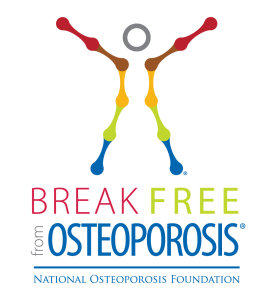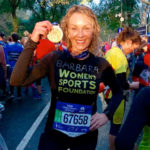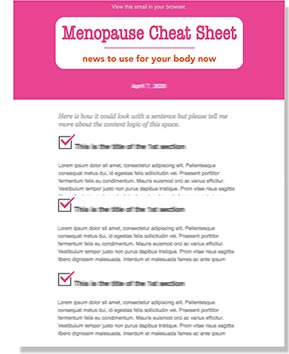May is National Osteoporosis Month, the best time in the world to think about the health of your bones.

For women, the incidence of osteoporosis is greater than heart attack, stroke and breast cancer combined. For men, the incidence is greater than prostate cancer.
To prevent osteoporosis, the key is to build the strongest, densest bone you can . . . early in life. Between the ages of 25 to 30, we develop what is called “peak bone mass” (NOF conducted seminal research about this last year), which is the time in our lives when our bones are . . . at their best. After age 30, bone starts to break down at a faster rate than it can be built. But, there are things to do to fight back (generally speaking, what’s good for your brain, is good for your heart, is good for your bones, too): eat a diet rich in calcium, vitamin D and other bone-enriching nutrients; strengthen your muscles by doing weight bearing exercises to maintain bone density for life; don’t smoke; and drink alcohol in moderation.
Ten things you really want to know about your bones:
To kick off the month-long celebration, here are a few key facts about our bones that just might convince you that they deserve our attention not just in May, but all year long:
- We continuously lose old bone and form new bone throughout our lives.
- Osteoporosis happens when you lose too much bone, make too little new bone, or both.
- Half of all women and one in four men over 50 will break a bone due to osteoporosis.
- Women lose up to 20 percent of their bone density during the 5 to 7 post-menopause years.
- If either parent (or both) broke bones as an adult, you may be at risk for osteoporosis.
- We can’t feel our bones getting weaker or thinner, and most people don’t know they have the disease until they break a bone.
- A simple sneeze, cough, or loving hug can cause a break in someone with osteoporosis.
- Small, thin people tend to break more bones. Heavier people build more bone mineral due to the extra weight they must carry around.
- You need to get enough calcium and vitamin D every day to keep bones healthy.
- Jumping Jacks are a great way to achieve peak bone mass early in life, and keep bones dense later in life!
So . . .
Take the #JUMPINGJACKCHALLENGE to celebrate your bones! Here’s how . . .
To celebrate National Osteoporosis Month and to encourage everyone—of all ages—to take good care of their bones, NOF created the #JumpingJackChallenge, which asks you to video yourself (or your kids or grandkids) doing 10 jumping jacks in less than 10 seconds, and post on social media. Note: if you have osteoporosis, instead of doing the jumping jacks yourself, urge other people in your life to take the challenge to help spread the message that it’s never too early or too late to take good care of your bones. Make sure to use the hashtag #JumpingJackChallenge and tag the @NationalOsteoporosisFoundation. Check out my attempt to take on the challenge:

































































One comment